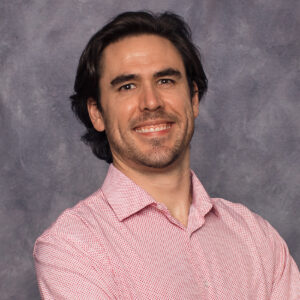 Motion is lotion
Motion is lotion
Exercise as a prescription
Prescribing Exercise
Matthew Bartow, OD, is such an advocate of physical exercise that he often prescribes it.
“At Oklahoma University where I trained, there was a push to see exercise as a prescription, and show how powerful it is. Just because something does not come in pill form, doesn’t mean it is not effective.”
Bartow, Primary Care/Sports Medicine physician in the HCM Medical Clinic–Marble Falls, is a believer in tying exercise prescriptions to long-term goals of his patients. For example, someone age 80 experiencing chronic knee pain might just want to walk freely again. That is different than a 50-year-old itching to try a triathlon.
“Men need to know their specific goal,” he said. “It should be one that makes you happy; not one that makes your doctor happy. It has to be part of your lifestyle.”
The first question he asks a new patient is this: What is something you enjoy doing so much it does not take much of an imagination to see yourself doing it years and decades from now?
“It has to be something you do every day for the rest of your life and enjoy. If you don’t truly enjoy it, you have to find something you are passionate about.”
After agreeing on a goal, Bartow breaks out the recommendations into three categories:
1) Weight Training
2) Aerobics Training
3) Neuro-muscular Training
Most men have had experience with the first two. But neuromuscular training may be the most important and overlooked, especially as men age. He describes it as “any activity that challenges hand-eye coordination.”
“Golf, tai chi, or any activity that requires balance or hand-eye coordination are highly correlated to long-term functioning beyond the age of 60,” he said. “It’s not enough to just have strong muscles. You have to move those muscles through space to get the full benefit.”
While exercise is a healthy activity, Bartow raises two cautions: the presence of coronary artery disease, and overuse injuries.
He recommends anyone beginning exercise over the age of 50, or who has a family history of coronary disease, to be checked out before embarking on any workout routine. Then, there should be a gradual approach to reaching specific fitness goals. Often that starts with something most think happens only after an injury occurs–physical therapy.
Bartow sees physical therapy as the best way to “rehab” an injury before it happens.
“When I get a feeling during an exam that maybe the person has never lifted before, or if I notice an ankle or knee problem, that’s when physical therapy truly shines. If we can identify those weaknesses before they cause injury, I send them to physical therapy to help them prevent it from happening. They then require fewer visits, there is less cost to the patient, and if we can catch it beforehand, they don’t need to suffer through the pain.”
A sensible exercise routine reaps multiple benefits.
“Exercise is one of those rare ‘home runs’ in medicine,” he said. “It’s something you can do at home, and you don’t have to worry about extra costs. It improves mood, helps reduce chronic pain, and leads to weight loss, which is important in treating diabetes, hypertension, cholesterol levels, and strain on joints. We all want to be as strong and fit as when we were young. When we look at exercise for the long term, if you can start now and continue through old age, you will feel 30 even when you are 50 or 60. So it’s like a time machine as well.”
Men’s Health Month is as good a time as any for men to update their “condition prescription.”
“I’m excited to bring the world of exercise to my patients. I encourage any way possible to get people moving and grooving. Motion is lotion!